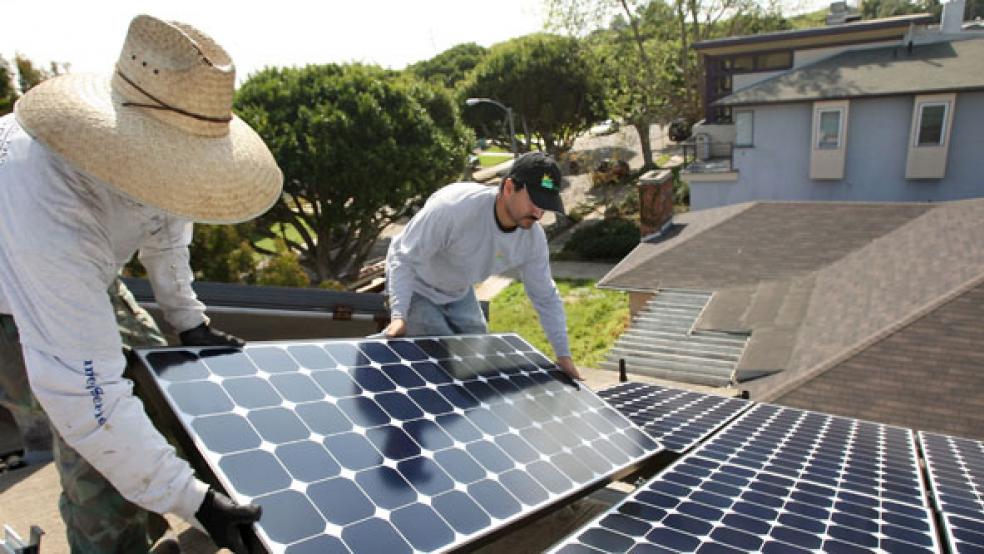President Obama has had a rocky relationship with environmentalists over the past couple of years, as the administration seemed to be currying favor with utilities, the oil and gas industry and business leaders in preparation for a tough reelection battle this fall.
When industry critics warned that a new air-quality rule forcing plants and manufactures to sharply reduce smog-producing ozone would cost millions of jobs, the president last September asked the Environmental Protection Agency to delay action and rewrite the rule. Weeks later, the EPA announced that it would miss a deadline for setting greenhouse gas emissions for coal-fired power plants and refineries, another setback for the effort to combat global warming.
RELATED: Solyndra Collapse Threatens Clean Energy Subsidies
In March, Obama further infuriated environmentalists with an Interior Department decision to open 7,400 acres of Wyoming’s picturesque Powder River Basin to destructive coal mining. And last month the president vowed to open more than 75 percent of potential offshore oil and gas resources to exploration.
The decision to pull back the anti-smog rule was widely viewed by environmental groups and health care advocates as a political move to placate power plant operators and their employees in key Midwestern campaign battle ground states, including Michigan and Ohio. “There’s a general consensus in the environmental community that that was probably the worst single enviro decision from this White House,” said Edwin Chen, a spokesman for the Natural Resources Defense Council, an environmental group.
“The administration earlier said the current standards were indefensible, and then the president pulls back and stops the EPA from issuing the rules that are long overdue that could save tens of thousands of lives.”
But Obama has done much to patch things up with environmentalists, public health advocates and liberal groups in part by:
• Pushing through tough new mercury pollution standards that will slash lethal emissions by 90 percent.
• Implementing new rules that will double automobile fuel efficiency by 2025
• Signing legislation that sets aside two million acres of wilderness area across the country
• Twice denying a permit, once again, to TransCanada to construct the controversial Keystone XL oil pipeline between Canada and the U.S. Gulf Coast.
Environmental leaders say the president’s decision to block the pipeline project demonstrated that Obama was finally listening to them. Not surprisingly, oil industry executives and Republican presidential candidates say he is jeopardizing a project that could add tens of thousands of “shovel ready” jobs to the economy.
“Of course we were disappointed by the ozone standard decision,” said Melinda Pierce, deputy national campaigns director for the Sierra Club, a premier environmental organization. “But when you focus on some of the [administration’s] huge accomplishments, there’s no way to diminish what Obama has done.”
Chen of the NRDC agrees: “Overall we really like what he’s done. The auto and mercury standards are both historic. Coal-fired power plants have been exempt from these mercury rules for decades. Obama is the first one to do that. Seen in the overall context, we just think there’s huge progress that has been made.”
This week, Obama unveiled his fiscal 2013 budget blue print that includes cuts in the EPA budget, especially funds for Super Fund toxic waste cleanups, and a revolving fund to maintain states’ water pipelines, purification facilities and vital waterways. Some groups fretted about backsliding on toxic cleanup and preservation of clean water sources, but they also hailed the president’s proposal to spend $6.7 billion on clean and renewable energy projects. He also renewed his call for an end to $4 billion of annual tax cuts and subsidies for the oil and gas industry. The big five oil companies—BP, Chevron, ConocoPhillips, ExxonMobil, and Shell—made a combined profit of $137 billion in 2011.
“President Obama has a very good story to tell about investments in clean energy to create jobs, increasing domestic production of oil and gas so that we are no longer a majority importer, and reducing pollution from major sources to protect public health,” said Daniel J. Weiss, a senior fellow and director of climate strategy at the Center for American Progress.”
The administration has suffered several high profile setbacks on the energy front, including the failure in Congress of a “cap and trade” proposal for reducing greenhouse gas emissions, and the political uproar over the administration’s ill-fated authorization of a $535 million loan guarantee in 2009 to the now bankrupt Solyndra Corporation. But environmentalists say that the president’s budget and State of the Union message underscore Obama’s important long-term commitment to clean energy production and pollution abatement.
The president’s budget would boost the Energy Department’s office of Energy Efficiency and Renewable Energy by $700 million to a total of $2.3 billion. The president is also seeking reauthorization of cash grants to wind, solar and other renewable energy companies. The budget would encourage the construction of more energy efficient commercial buildings, and would support the Interior Department’s program of allowing new renewable energy projects on public land.


